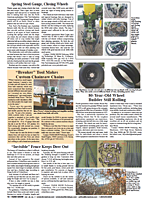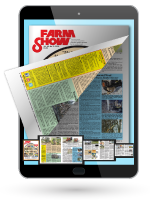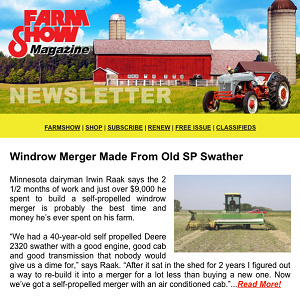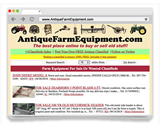You have reached your limit of 3 free stories. A story preview is shown instead.
To view more stories
(If your subscription is current,
click here to Login or Register.)
Horse Tank Made From Civil War Era Tree
When Dale McLaen salvaged a bur oak log from a deconstruction site, he didn’t have a wooden horse tank in mind. However, when a new tank was needed at a historic display at a nearby state park, the Civil War era oak proved perfect. McLaen, a member of the Fort Ransom Sodbusters Association, enlisted the help of a fello
..........
You must sign in, subscribe or renew to see the page.

You must sign in, subscribe or renew to see the flip-book
Horse Tank Made From Civil War Era Tree
When Dale McLaen salvaged a bur oak log from a deconstruction site, he didn’t have a wooden horse tank in mind. However, when a new tank was needed at a historic display at a nearby state park, the Civil War era oak proved perfect. McLaen, a member of the Fort Ransom Sodbusters Association, enlisted the help of a fellow member, Jim Rudlang, to do the job.
“Jim helped me cut the stave blanks out of the log and cut them down to size,” says McLaen. “We cut grooves in the edges of the staves and used splines to fit them together. It was a poor man’s tongue and groove.”
McLaen and Rudlang cut the new tank’s bottom out of plywood with plans to line the tank with plastic. While they wanted it to look authentic, they also wanted to avoid the fate of the tank being replaced.
“The old tank had been dry too many times and couldn’t hold water,” explains McLaen. “Without a liner, wooden tanks have to hold water all the time, or they won’t stay tight.”
The staves were 4 1/2 in. wide and 22 in. long and were planed down to 1 7/8 in. thickness. The two woodworkers laid 57 splines into the grooves on the 56 staves to make the 68-in. dia. (inside) tank.
“We planned to use the steel bands from the old tank, but our staves were a hair thicker,” says McLaen. “We had to lengthen them about 4 in. to fit.”
The tank will be filled and on display for the association’s horse-drawn equipment demonstrations held twice yearly. Draft horses used on implements will water at the tank with water pumped into it from a quasi-working windmill. Donated by two of the association’s members, it too was restored by McLaen.
“The windmill hadn’t been used in 40 years, but it was in very good shape,” he says. “All it needed was a bearing. I cleaned it up and painted it.”
The windmill will pump water from a reservoir into the tank with a return pipe carrying water back to the reservoir. A hydrant will supplement water as needed, as horses use the tank.
The tank and windmill will be two of many elements demonstrating farm life in the early 1900s in North Dakota during the Fort Ransom Sodbuster Days Shows. They’re held in mid-July and again in early September.
“We’ll have it all operating like the windmill and tank would’ve been used in sodbuster days,” says McLaen.
Contact: FARM SHOW Followup, Fort Ransom Sodbusters Association, P.O. Box 56, Fort Ransom, N.D. 58033 (fortransomsodbusterassociation@gmail.com; www.fortransomsodbusters.com) or Dale McLaen, 13756 Hwy. 11, Rutland, N.D. 58067 (ph 701-678-5232).
To read the rest of this story, download this issue below or click
here to register with your account number.





